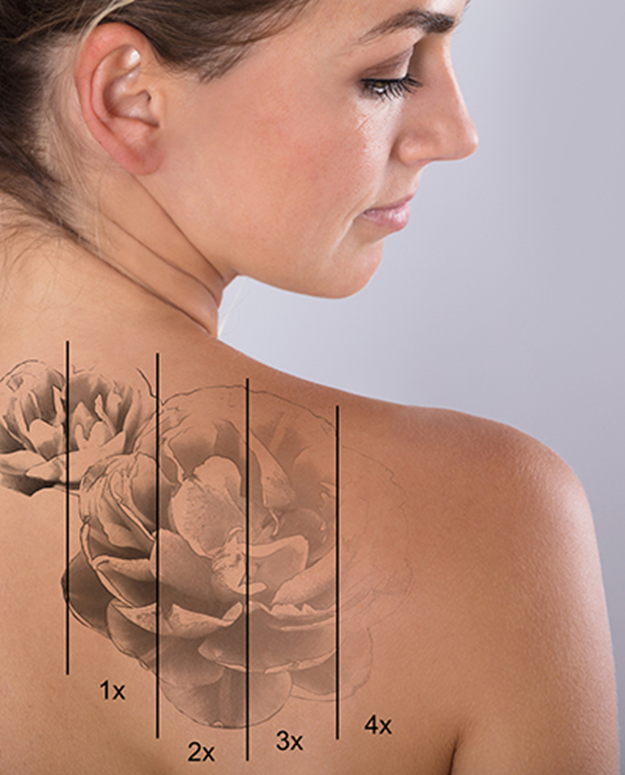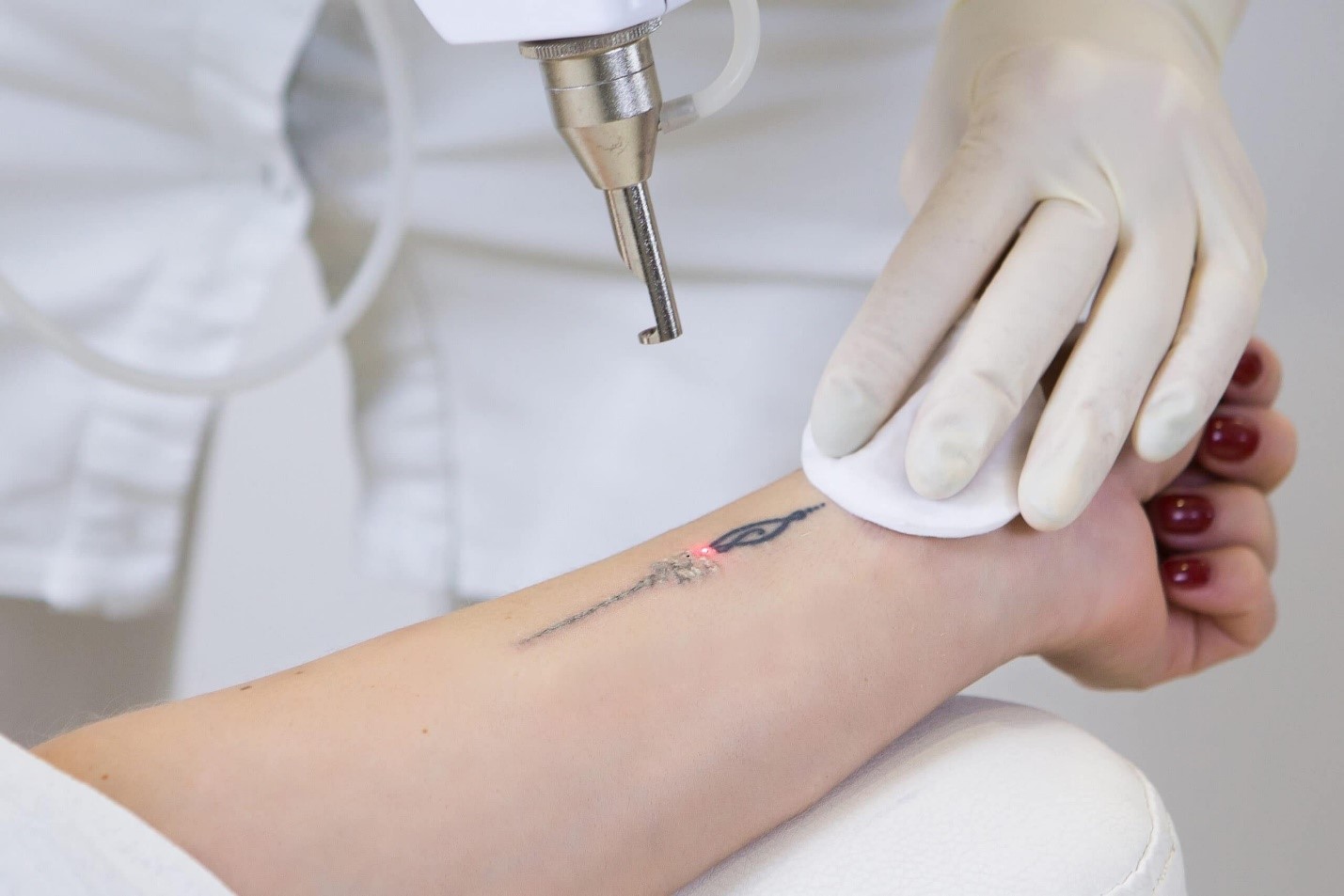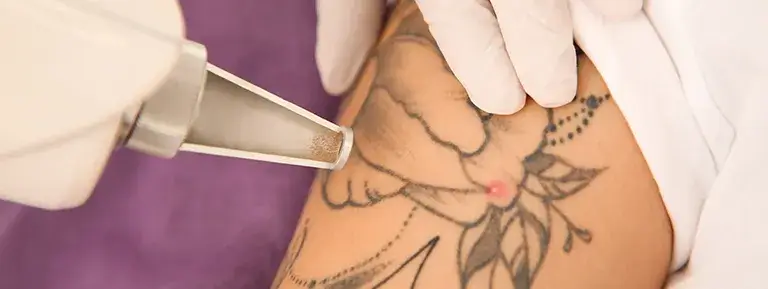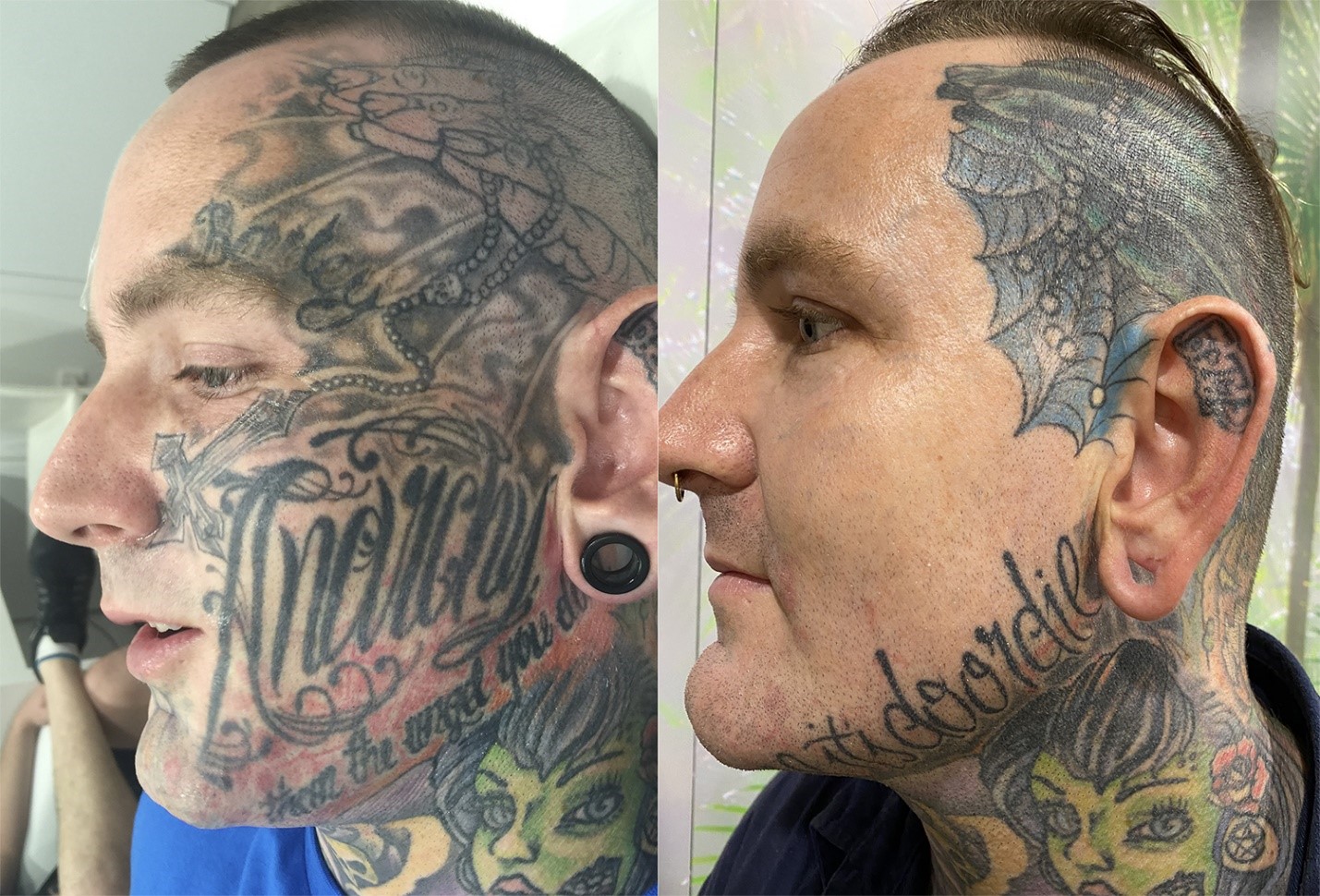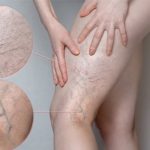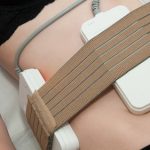TATTOO REMOVAL
Tattoo removal is a procedure done to try to remove an unwanted tattoo. Common techniques used for tattoo removal include laser surgery, surgical removal and dermabrasion.
Tattoo ink is placed beneath the top layer of the skin. That makes tattoo removal more complicated — and expensive — than the original tattoo application.
If you’re interested in tattoo removal, consult a skin doctor (dermatologist) about the options. Don’t attempt tattoo removal on your own. Do-it-yourself tattoo removal creams and other home treatments aren’t likely to be effective and can cause skin irritation or other reactions.
How Is Tattoo Removal Done And What Are The Most Common Tattoo Removal Methods?
There are different methods and techniques for tattoo removal. The most popular and effective tattoo removal options are discussed in the following.
- Tattoo surgical removal: Surgical tattoo removal involves using a surgical procedure to cut away skin that contains the ink. This method is performed under local anesthetic injections. However, this method can only be done if the skin can compensate for the area where the tattoo has been removed, which means that large tattoos will require skin grafts and require multiple sessions if the skin cannot be simply stitched together. This means that traditional surgical tattoo removal is more suitable for removing small tattoo. Pain, swelling, and bruising are common side effects after surgical tattoo removal.
- Tattoo Removal creams: Tattoo removal creams are applied to tattooed skin in hopes of erasing the ink. Unfortunately, there is little evidence that tattoo removal creams actually remove tattoos. Most of these creams do not even claim to remove tattoos entirely. Instead, they claim to help make tattoos less noticeable. These creams claim to work by bleaching or peeling away the top layer of your skin (epidermis). Some even claim to replace the white blood cells on your skin (macrophages) that are filled with tattoo ink. However, tattoo ink is injected into the next layer of your skin (dermis), so many of these surface-level treatments are ineffective. At best, a tattoo removal cream will make the tattoo fade away leaving a distorted, discolored version of the tattoo that may become a permanent scar. Chemicals in these products can cause painful side effects, including redness, rashes, burning sensation, peeling, permanent scarring, permanent skin discoloration, and inflammation. Moreover, if you have allergies, using a questionable cream could cause potentially life-threatening symptoms, which include rashes, hives, swelling, breathing problems, nausea, vomiting, anaphylaxis.
- Micro dermabrasion: Micro dermabrasion involves using an abrasive device to sand down the layers of the skin. Applying this method might be painful and will result in an open wound that needs time to heal. The obvious complications for such treatment include pain, bleeding, scabbing, scarring, itching, and the possibility of an infection.
- Salabrasion: Salabrasion is an extremely dangerous tattoo removal process. It is similar to microdermabrasion, but instead of using an abrasive brush or a diamond wheel, this process involves the removal of the epidermis then blasting the salt onto skin with force, which might cause extreme pain and discomfort.
- Injectable methods (Rejuvi): The Rejuvi method involves applying a chemical remover to the skin in order to capture the ink particles by forming a thicker substance within the dermis, and then pushing out through the outer layer of the skin along with the trapped ink particles. Unfortunately, despite the simplicity of the process, it has always resulted in severe scarring.
- Cryotherapy: Cryotherapy treatment stands for the process of freezing off the tattooed skin, which as expected involves taking away the healthy unaffected outer layer of skin in order to reach the pigmented dermal layer. This method has many complications similar to the previous ones.
- Laser tattoo removal: Laser tattoo removal is the only safe and effective method to remove a tattoo without damaging the outer layer of the skin. Different wavelengths of light target different tattoo colors, as sufficient amount of energy penetrates the skin and reaches the tattoo pigments in order to break up the ink. Older lasers used to damage the surrounding skin due to excessive heat. Fortunately, with today’s technology, laser treatments are able to break up the ink photo-mechanically rather than using excessive heat on the ink, which leaves the integrity of the outer dermis of the skin maintained and undamaged.
- Tattoo removal pen: Similar to laser tattoo removal, tattoo removal Pen uses laser technology to break down and fragment the ink particles into smaller particles, which allows the body to remove them from the skin. Generally speaking, it takes 6-8 sessions to completely remove a tattoo using this method.
Can Tattoo Removal Cause Infections?
Nowadays, lasers are considered as one of the safest ways to get rid of tattoos, as it is the least painful, and with 3-4 sessions you can remove almost 80% of your permanent tattoo. Also, among all other methods of tattoo removal, it is considered the most effective one. However, like every other treatment, laser tattoo removal has some unwanted side effects that can be normal symptoms through the healing process, or a sign of a possible infection, which can be extremely dangerous and cannot be ignored.
What Are The Main Tattoo Removal Infection Signs?
- Itchiness:
Itchiness as a common side effect that can be felt soon after the end of the treatment. Also, the itching sensation may spread out from the area of treatment to the surrounding area. If you experience itching for only 2 to 3 days after the treatment, then it is normal and there is nothing to worry about. However, if the itching persists for almost a week, then you must visit your practitioner.
- Swelling:
The majority of the patients experience swelling after laser tattoo removal. Normally it lasts for a week, and rarely, it turns into a severe infection. In such circumstances, you will need medical assistance.
- Redness:
It is quite natural to develop some degree of redness in the treated area after the laser treatment. However, if it persists for more than 2 weeks then it is a sign of major infection, which will become more painful and discomforting with each passing day and requires immediate medical assistance.
- Blistering:
This uncommon sign occurs only if you have sensitive skin. Blisters can cause you a lot of pain. Therefore, avoid touching them or popping them. You can only apply an anti-bacterial ointment to the blisters as per your doctor’s recommendation.
- Skin Discoloration:
Patients undergoing laser tattoo removal are more likely to experience skin discoloration. As the heat pointed towards the treated area affects the skin color and turns it into white. During the recovery process, the skin keeps on changing color and gets back to its normal color after 4-6 months.
Why Iran for tattoo removal?
Iran is well known for its good reputation for preforming all types of medical procedures, especially those that require the use of technologically advanced equipment, such as lasers, at the most affordable prices. By getting tattoo removal in Iran, you rest assured that you will get the best treatment at affordable cost.
How much does tattoo removal cost in Iran?
The cost of tattoo removal jobs depends on the method being used, the size of the tattoo, and the level of expertise of the operator. The cost can range from several hundred to several thousand dollars per session. For instance, the cost of laser tattoo removal in different parts of India ranges between $100 and $600 per session, while tattoo removal prices in Turkey start with almost $300 per session and reaches $2000, depending on the clinic. However, the average cost of laser tattoo removal in Iran is around $200 per session.

